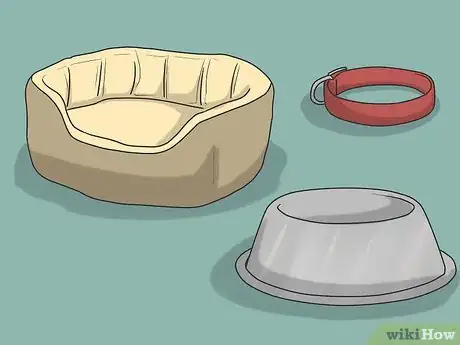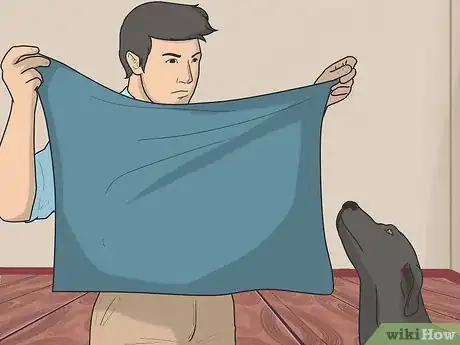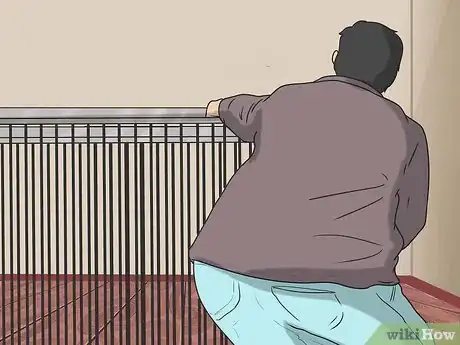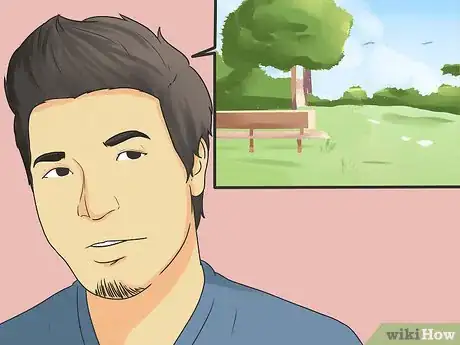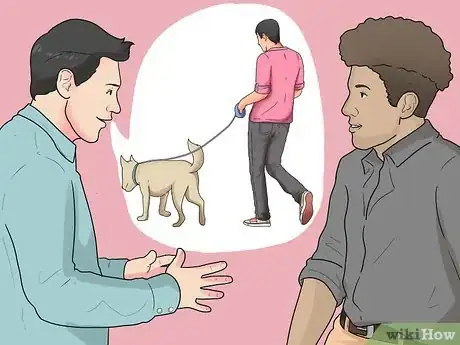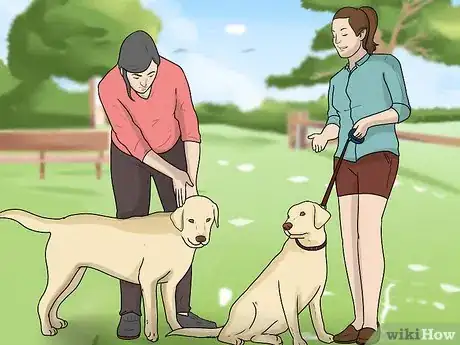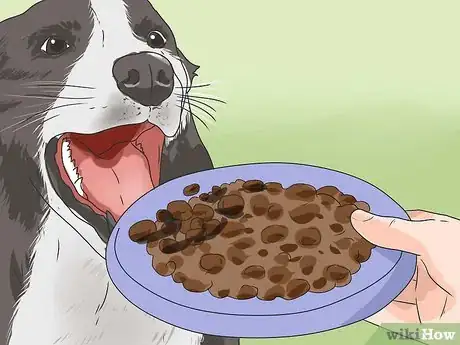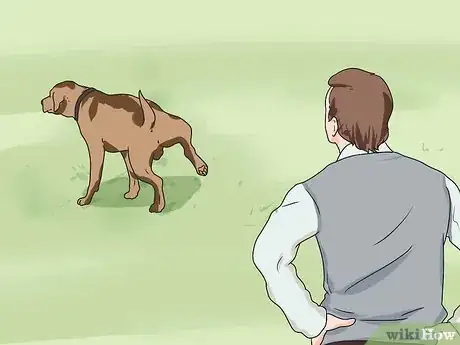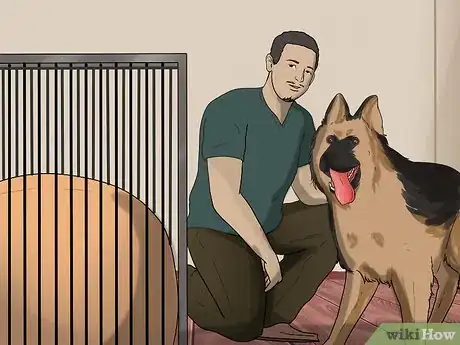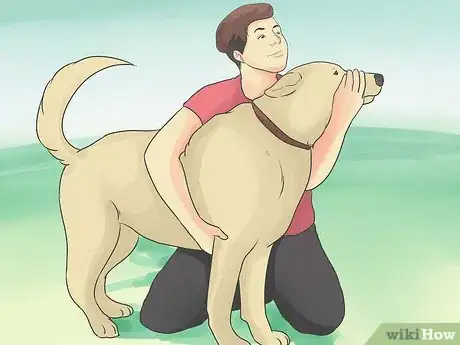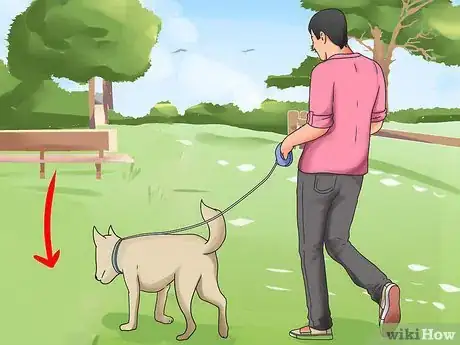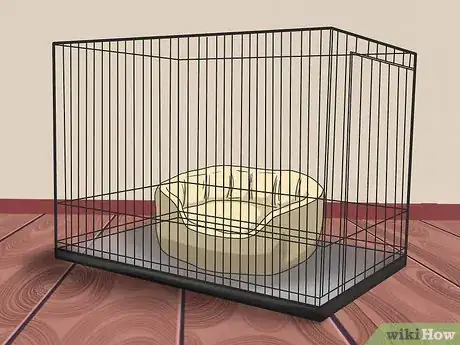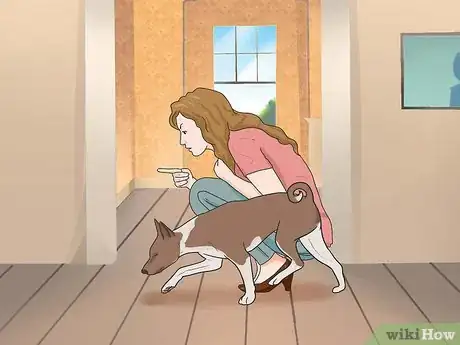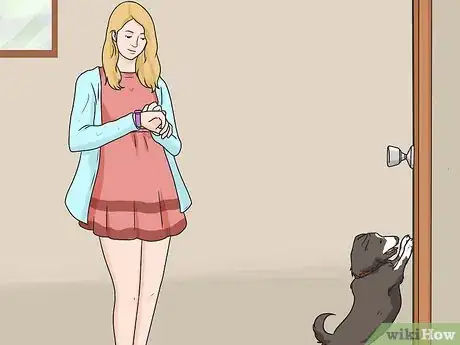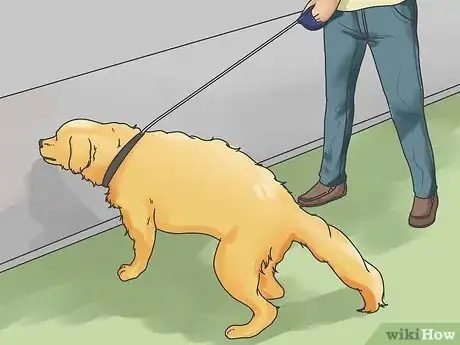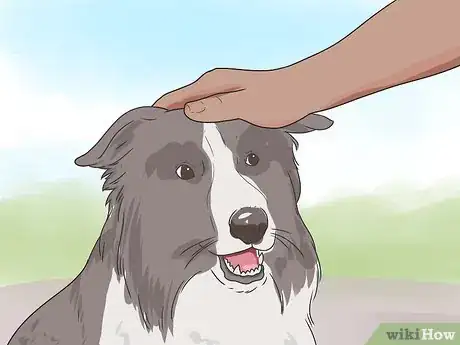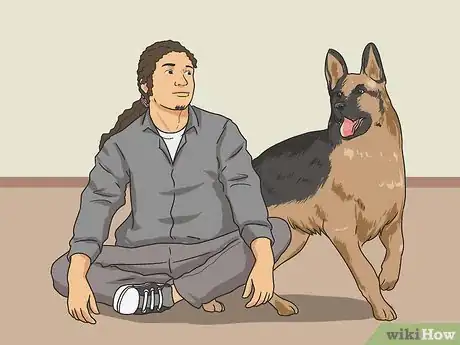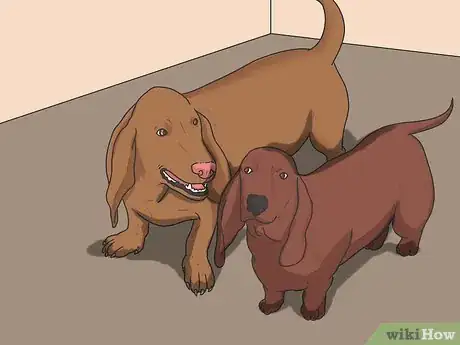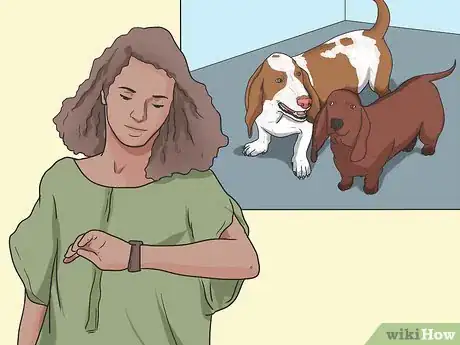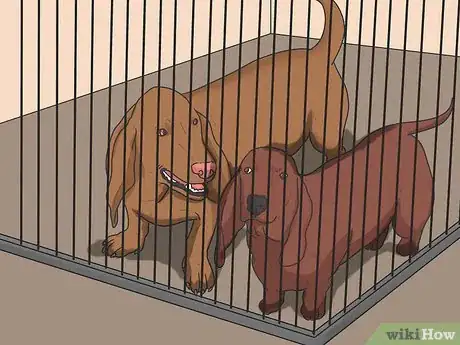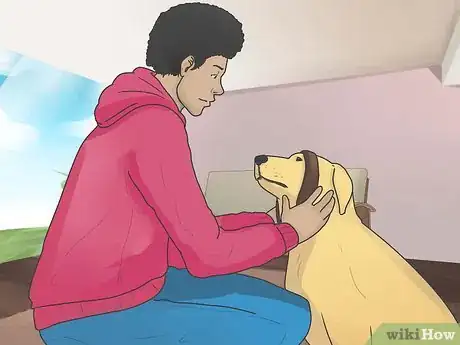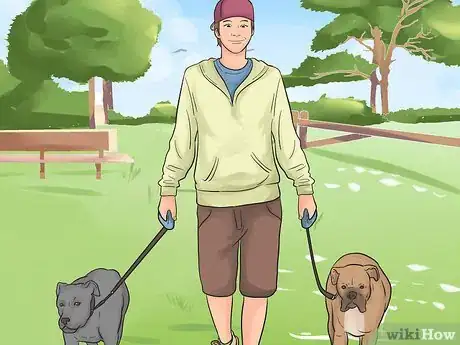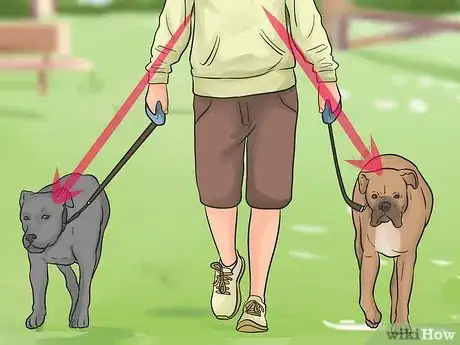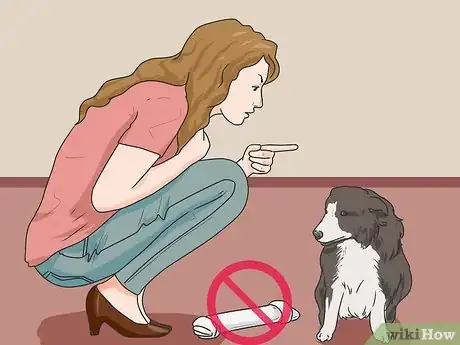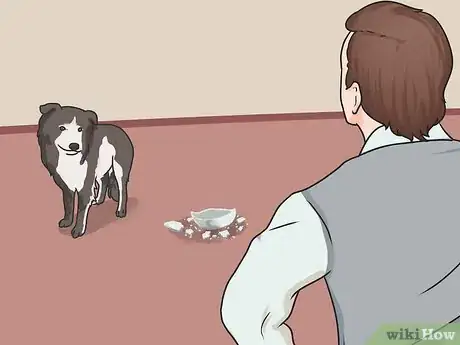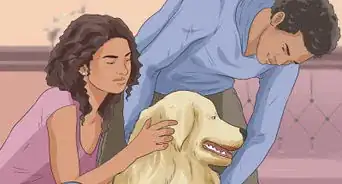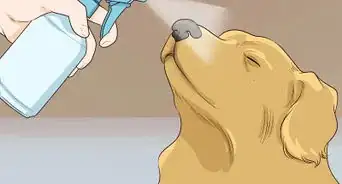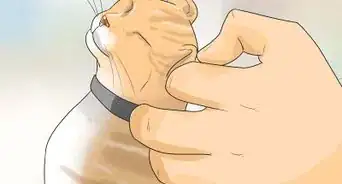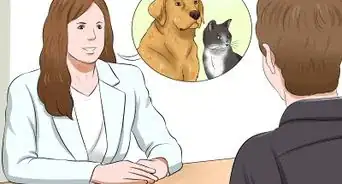This article was co-authored by Toni Woods. Toni Woods is a Professional Dog Trainer in Washington DC. With over 15 years of experience, Toni specializes in improving the relationship between dogs and their families and easing the suffering of dogs experiencing separation anxiety. Toni holds a BS in Biology from Wittenberg University and taught biology for nine years. She now dedicates her life to helping dogs with separation anxiety.
wikiHow marks an article as reader-approved once it receives enough positive feedback. In this case, 88% of readers who voted found the article helpful, earning it our reader-approved status.
This article has been viewed 513,393 times.
If you are a dog lover, then it's often the case that you'd like to acquire another dog. Although bringing home a new dog is an exciting time for you, it can be an upsetting time for your existing pets. How you introduce the new dog to your other pets can make the difference between a successful long-term relationship and disaster. Likewise, the new dog is likely to feel uncertain and confused in his new surroundings. Carefully introducing him can build his confidence.
Steps
Preparing to Acquire a New Dog
-
1Gather new supplies for the new dog. Get separate food and water bowls, a new bed, collar and leash, and a dog crate. Your new dog should not eat or drink from an established dog's bowls. Likewise, it should not sleep in an established dog's bed.
-
2Buy puppy pads. Puppy pads are moisture absorbent mats that can be placed on the floor or in a dog crate. They are used when the dog has accidents during its housetraining.
- Puppy pads can be helpful to have around even if the new dog is not a puppy.
Advertisement -
3Choose a toilet area for the new dog. Your new dog will need an outdoor place to relieve himself. If you have a dog already, this can be the same location that he uses. Find a spot in your yard or at a nearby grassy area. Plan to use this place regularly so that your dog will expect to relieve himself at this location when he goes outside.
Preparing to Bring Home a New Dog
-
1Prepare an old t-shirt with your scent for each dog. A few days before you plan to bring the new dog home, wear one t-shirt for a day. This will put your scent on the shirt for the established dog. The next day, wear another t-shirt to put your scent on it for the new dog. The goal here will be to eventually have your own scent mingle with scents from your new dog and established dog on each t-shirt.
- You can also sleep with the t-shirts to get your scent on them.
- The t-shirts should be prepared a day or two ahead of when you are giving them to the dogs.
-
2Rub one t-shirt over your established dog. Take one of the t-shirts that you’ve worn and rub it over the dog you already have. You can also let your dog sleep with the t-shirt for a night.
-
3Give the other t-shirt to your breeder or rescue organization. Ask your breeder or rescue organization to have the new dog sleep on the other t-shirt for at least one night. This also helps your new dog get familiar with your scent.
-
4Exchange the t-shirts. Give the established dog the shirt the new dog slept on, and vice versa. This way the two dogs become familiar with each other prior to meeting. Since dogs communicate by scent, it is helpful to have them recognize each other's scents and associate it with your scent.[1]
-
5Use a dog pheromone spray. Dog appeasing pheromone sprays (DAP) can boost the scent recognition process. These can be purchased from your veterinarian or at major pet retailers. DAP contains a synthetic version of the pheromone that a nursing bitch gives off in order to make her pups feel safe and content.
- If so desired, spritz the t-shirts with DAP at each stage, giving it as bedding to the first dog, then spritz again when it’s transferred to the second dog.[2]
-
6Get a blanket that smells familiar to the dog. If you are getting a puppy, you should have something that smells familiar to it. When you pick up the puppy, ask the breeder for a blanket that smells of the puppy's mother and littermates. Put the blanket in the puppy’s crate. This gives him something familiar to snuggle with.
-
7Set up the new dog’s crate. Your new dog needs a space where he feels safe. Set aside one room that contains his crate, food, water and puppy pads. Place the bedding in the crate. Lay a blanket over one end so that the crate can be dark and secluded.
- If you collected one, include the new dog’s familiar-smelling blanket.
- Include the t-shirt that has your scent and the established dog’s scent on it. This helps to blend the smells together and makes a link between the familiar and the new.
Introducing Adult Dogs on Neutral Territory
-
1Plan a park visit. Dogs, especially adult ones, will benefit from being introduced in a neutral territory away from home.[3] Many rescue shelters will facilitate these meetings to see if the dogs will get along. Plan this visit to take place several days before the new dog is scheduled to come home with you.[4]
- Choose a park you don’t normally visit so that your dog isn’t territorial about the location.
- This step can be especially important before making a final decision about taking a rescue dog home.
-
2Ask a friend to bring the new dog on a walk. The rescue shelter or owner should walk the dog in the same park where you are. Plan to meet at the same time so that the dogs can interact.
-
3Allow the dogs to meet. Set off on a walk in the park as if it’s just a normal walk. Allow the dogs to meet up. Meeting on neutral territory lowers the stakes because neither dog has anything to defend there.[5]
- Monitor the dogs' body language closely.[6] Only go through with the meeting if all parties are calm and not showing any signs of aggression.
- Let the dogs circle around to sniff each others' rear ends rather than forcing them to meet face-to-face (which is an unnatural, "impolite" greeting in the dog world).[7]
- Ideally, the dogs will meet in this type of situation a couple of times before the newcomer arrives at your home.
- If the two dogs get along and play well together in the park, chances are they will have a good relationship when they are at home together. This bodes well for their future relationship. Likewise, if the dogs hate each other on sight, you are forewarned about a clash of personalities. If this is the case, you should rethink getting that particular dog.
-
4Reward the established dog’s good behavior. Give positive reinforcement to your dog by giving it a treat or some extra attention. Always speak to your dog first when introducing it to a new dog.
Acclimating Your New Dog in the First 24 Hours at Home
-
1Take the new dog to its toilet area. When you first arrive home, take the new dog straight to the place you want him to use as a toilet. This is the first step in house-training your dog.
-
2Show the crate to the new dog. Bring the dog to his crate and place him inside. Leave the door open so that he can come out if he wants to.
-
3Keep the new dog isolated for the first 24 hours. When you bring the dog home, introduce him steadily to new rooms in your house. Limit him to the first room for at least 24 hours, keeping him in that room with his crate open. Allow the new dog a bit of time to get used to his new surroundings. He will slowly get accustomed to new scents, such as the scents in your house and the scent of the established dog from the t-shirt in his crate.
- Do not give him the range of the house straight away. This will overwhelm him.
-
4Praise your dog. Give your dog positive reinforcement by telling him that he’s a good dog. Give him a pet and scratch behind the ears.
-
5Take your new dog to the toilet area every few hours. Make sure your new dog knows where to go when he needs to relieve himself. Take him to the toileting area every few hours during the first 24 hours.
- Ignore accidents today. The new dog may still need to be housetrained, and he will need to learn where to go. Take him out to his toilet area often. If he does have an accident, simply ignore the behavior. Punishing him will only confuse and distress him.
-
6Keep the crate available. After every toilet visit, take the new dog back to its crate. This will help him feel safe and he won’t get so overwhelmed.
Letting Your New Dog Explore Your House
-
1Let the new dog explore one room at a time. Starting with the second day, introduce your new dog to a new room every day. Do not give him the range of the house straight away. This will overwhelm him.
-
2Let the new dog explore new rooms for 20 minutes. If the new dog seems inquisitive, you can start to show him other rooms, one at a time. Take him to each new room and let him explore for about 20 minutes at a time.
- If the dog seems overwhelmed, limit him to one room for a few days.
- Make sure the new dog always has ready access to his crate.
-
3Follow up exploring rooms with a toilet stop. Once the new dog has explored a room for 20 minutes, take him out to the toilet spot. This maximizes the chance of him toileting outside and establishing this habit.
-
4Praise your dog. Give your dog positive reinforcement by telling him that he’s a good dog. Give him a pet and scratch behind the ears.
-
5Return the dog to its crate. After every exploratory session and toilet visit, take the new dog back to its crate. This will help him feel safe and he won’t get so overwhelmed.
-
6Ignore accidents for the first several days. The new dog may still need to be housetrained, and he will need to learn where to go. Take him out to his toilet area often. If he does have an accident, simply ignore the behavior. Punishing him will only confuse and distress him.
Introducing a New Dog to Your Established Dog at Home
-
1Introduce the dogs in the new dog’s room. After the new dog has spent at least 24 hours at your home, you can start introducing the new and established dogs to each other. To do this, place the new dog in his crate and close the crate door. Bring the established dog into the room and let him sniff around.
- Don't point out the new dog. Let the dog find the new dog for himself. The established dog will be able to investigate by sniffing the crate and finding the new dog himself.[8]
-
2Give the dogs about 20 minutes to interact. Allow the two dogs to interact through the bars of the crate for up to 20 minutes. Remove the established dog from the room. Let the new dog out of the crate and take him to his toilet area.
-
3Reward the established dog’s behavior. If the established dog behaves positively and approaches the new dog in a friendly manner, reward his good behavior with a treat.
- Do your best to ignore the new dog during this time, so that the older dog is not jealous. Instead, speak to the established dog first. For the first few days, only praise the new dog when the established dog isn’t around. Give your dog positive reinforcement by telling him that he’s a good dog. Give him a pet and scratch behind the ears.
-
4Repeat the dogs’ introduction several times a day. The two dogs will start to get used to each other, either by being happy in each other’s company, or by ignoring one another. Continue this introduction for a few days.
Increasing Contact Time Between the Dogs
-
1Put a leash on the new dog. After the dogs have had a chance to get to know each other a bit, introduce the two dogs by putting the new dog on a leash and bringing him out of the crate. Monitor the dogs’ reactions to each other. The established dog may have one of several reactions: he will accept the new dog and want to play; cold-shoulder the new dog; or growl and threaten him. Give the dogs about 5 minutes to interact.[9]
- Keeping the new dog restrained on a leash is important during these first meetings. If the new dog chases your established dog on its home territory, your dog is more likely to dislike the newcomer.[10]
- After they have interacted, remove the established dog and take the new dog out to the toilet area.
-
2Gradually increase contact time between the dogs. Depending on how well the dogs are getting along, gradually extend these contact times to 20 minutes in duration. After each session, lead the established dog out of the room and take the new dog out to the toilet area.
- It is fine to take this step more slowly if necessary.
-
3Start taking the dogs on walks together. As the two dogs get used to one another, stretch out the 20 minute segments by taking them for walks together.
- When going for walks, always put on the established dog's leash first. Let him through the door ahead of the newcomer. He is less likely to challenge the newcomer if he is assured that he is top dog.
-
4Supervise the dogs at all times. Keep your eye on both dogs when they are together. However, do not be too alarmed if the established dog growls. Despite any growling or signs of aggression, the established dog is extremely unlikely to harm the new dog and is more likely to make a fuss and then wander off in disgust. You should, however, keep an eye on the dogs at all times until you are confident that they are used to each other.
-
5Keep the new dog away from the other dog’s things. To avoid having the established dog feeling territorial, do not allow the new dog to eat or drink from the other dog’s bowls. Also, prevent the new dog from playing with the other’s toys.
-
6Ignore accidents for the first several days. The new dog may still need to be housetrained, and he is learning where to go. Take him out to his toilet area often. If he does have an accident, simply ignore the behavior. Punishing him will only confuse and distress him.
Expert Q&A
Did you know you can get expert answers for this article?
Unlock expert answers by supporting wikiHow
-
QuestionHow do I introduce my dog to the neighbor's dog?
 Toni WoodsToni Woods is a Professional Dog Trainer in Washington DC. With over 15 years of experience, Toni specializes in improving the relationship between dogs and their families and easing the suffering of dogs experiencing separation anxiety. Toni holds a BS in Biology from Wittenberg University and taught biology for nine years. She now dedicates her life to helping dogs with separation anxiety.
Toni WoodsToni Woods is a Professional Dog Trainer in Washington DC. With over 15 years of experience, Toni specializes in improving the relationship between dogs and their families and easing the suffering of dogs experiencing separation anxiety. Toni holds a BS in Biology from Wittenberg University and taught biology for nine years. She now dedicates her life to helping dogs with separation anxiety.
Professional Dog Trainer
-
QuestionI just got a very shy dog. How should I introduce her to my other three dogs?
 Pippa Elliott, MRCVSDr. Elliott, BVMS, MRCVS is a veterinarian with over 30 years of experience in veterinary surgery and companion animal practice. She graduated from the University of Glasgow in 1987 with a degree in veterinary medicine and surgery. She has worked at the same animal clinic in her hometown for over 20 years.
Pippa Elliott, MRCVSDr. Elliott, BVMS, MRCVS is a veterinarian with over 30 years of experience in veterinary surgery and companion animal practice. She graduated from the University of Glasgow in 1987 with a degree in veterinary medicine and surgery. She has worked at the same animal clinic in her hometown for over 20 years.
Veterinarian For a shy dog, meeting three others is a big ask. She may find one overwhelming so three amplifies the problem. Introduce them one at a time and notice any special tension. You may need to work on these individual relationships first, have a friend keep the confident dog under control with "Sit" "Stay" commands, whilst you reward the shy dog's bold behavior with praise and treats. Under no circumstances allow the three dogs to gang up and mob her.
For a shy dog, meeting three others is a big ask. She may find one overwhelming so three amplifies the problem. Introduce them one at a time and notice any special tension. You may need to work on these individual relationships first, have a friend keep the confident dog under control with "Sit" "Stay" commands, whilst you reward the shy dog's bold behavior with praise and treats. Under no circumstances allow the three dogs to gang up and mob her. -
QuestionA different article said to say "No" when the dog goes to the bathroom inside, but here it says to ignore it. What should I do?
 Pippa Elliott, MRCVSDr. Elliott, BVMS, MRCVS is a veterinarian with over 30 years of experience in veterinary surgery and companion animal practice. She graduated from the University of Glasgow in 1987 with a degree in veterinary medicine and surgery. She has worked at the same animal clinic in her hometown for over 20 years.
Pippa Elliott, MRCVSDr. Elliott, BVMS, MRCVS is a veterinarian with over 30 years of experience in veterinary surgery and companion animal practice. She graduated from the University of Glasgow in 1987 with a degree in veterinary medicine and surgery. She has worked at the same animal clinic in her hometown for over 20 years.
Veterinarian If in doubt, ignore the accident. The only time it might be appropriate to say "No" is if you catch him as he squats (the aim then is merely to surprise him enough to interrupt the toilet and whisk him outside — rather than punish). The risk with punishment is the dog links "No" to toileting in your presence, rather than the place. This can actually inhibit toilet training as the dog then becomes shy about performing in your presence.
If in doubt, ignore the accident. The only time it might be appropriate to say "No" is if you catch him as he squats (the aim then is merely to surprise him enough to interrupt the toilet and whisk him outside — rather than punish). The risk with punishment is the dog links "No" to toileting in your presence, rather than the place. This can actually inhibit toilet training as the dog then becomes shy about performing in your presence.
References
- ↑ Canine Behaviour: A Guide for Veterinarians. Bonnie Beaver. Publisher: Saunders
- ↑ Canine Behaviour: A Guide for Veterinarians. Bonnie Beaver. Publisher: Saunders
- ↑ Toni Woods. Professional Dog Trainer. Expert Interview. 11 November 2020.
- ↑ Toni Woods. Professional Dog Trainer. Expert Interview. 11 November 2020.
- ↑ Toni Woods. Professional Dog Trainer. Expert Interview. 11 November 2020.
- ↑ Toni Woods. Professional Dog Trainer. Expert Interview. 11 November 2020.
- ↑ Toni Woods. Professional Dog Trainer. Expert Interview. 11 November 2020.
- ↑ BSAVA Manual of Behaviour: Canine and Feline. Horwitz, Mills, & Heath. BSAVA Publications.
- ↑ BSAVA Manual of Behaviour: Canine and Feline. Horwitz, Mills, & Heath. BSAVA Publications.
- ↑ Canine Behaviour: A Guide for Veterinarians. Bonnie Beaver. Publisher: Saunders
About This Article
It can be a challenge to introduce a new dog to your hose and your other dogs, but if you’re patient, it can go smoothly. Set up a crate for the new dog in a quiet room, and include a blanket from its original home so it will feel comfortable. It can help to place a t-shirt with your scent, and even your other dogs’ scents, in the crate as well. Place the dog in the crate as soon as you bring it home, but leave the door open so it can come out if it wants. Leave the dog in that room for about the first day, then slowly start introducing him to new rooms, and the other animals. For tips from our Veterinary co-author on introducing adult dogs in a neutral location, keep reading!
